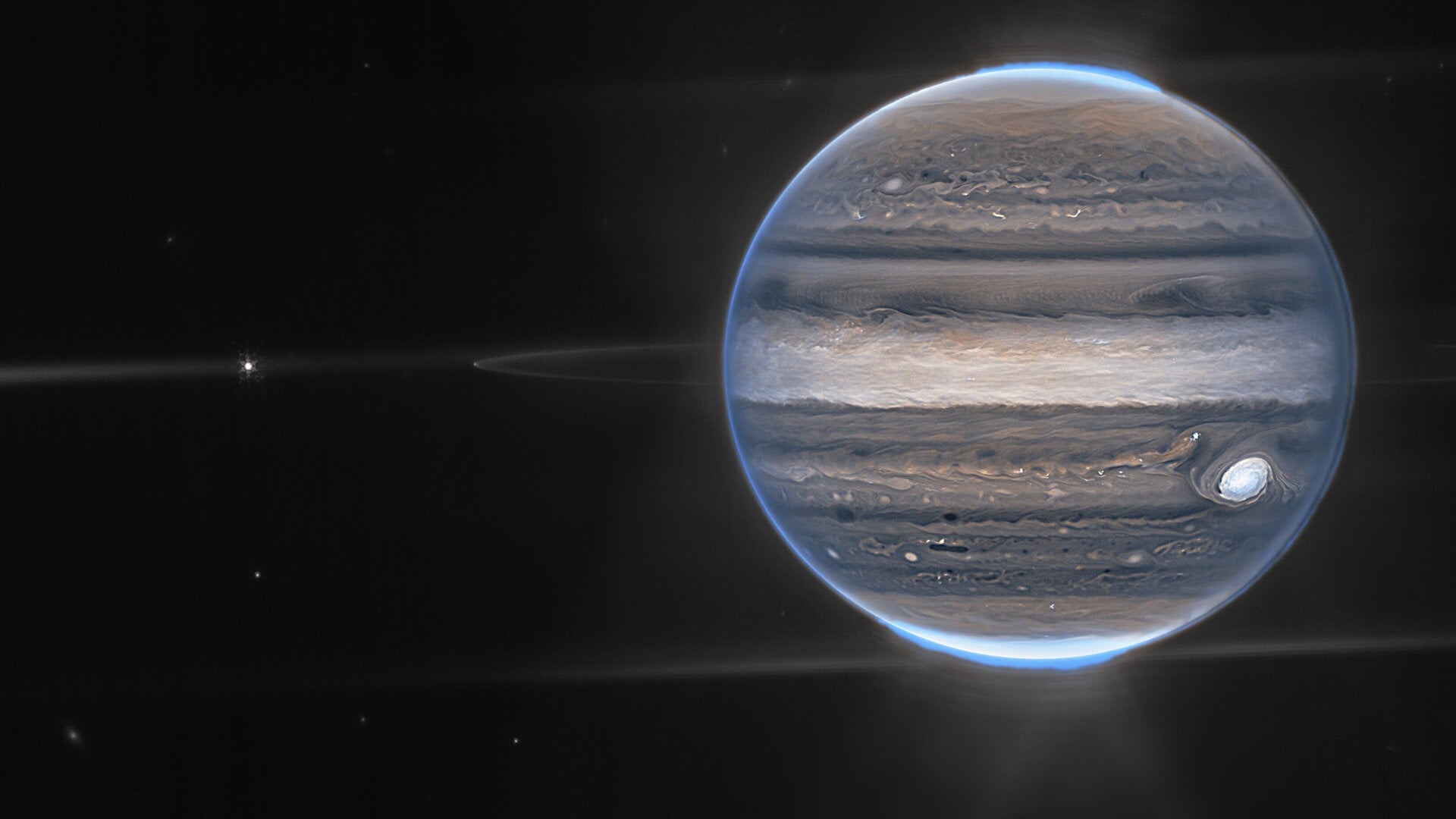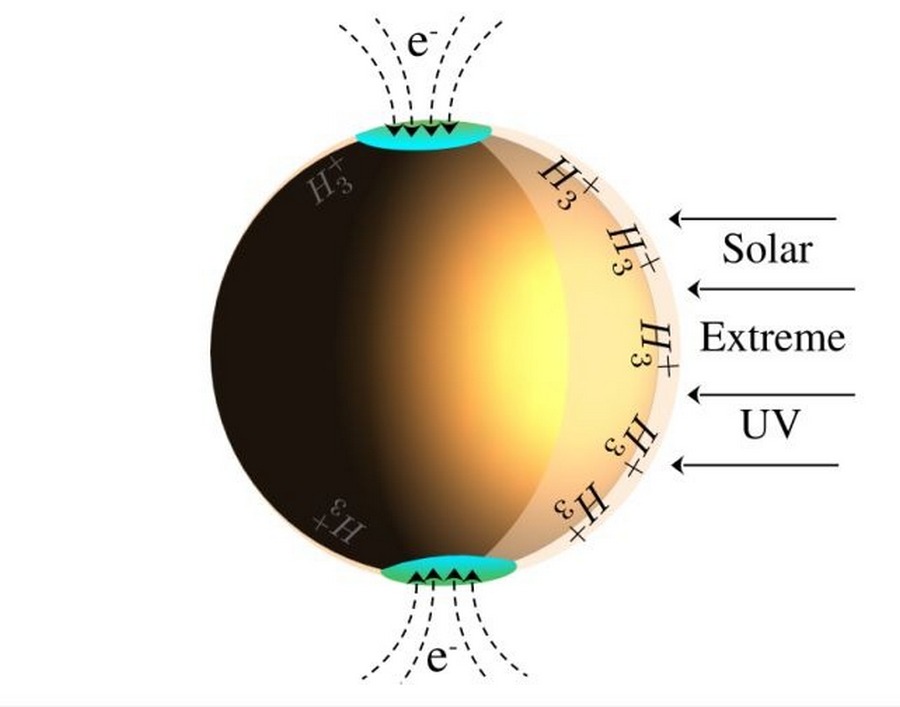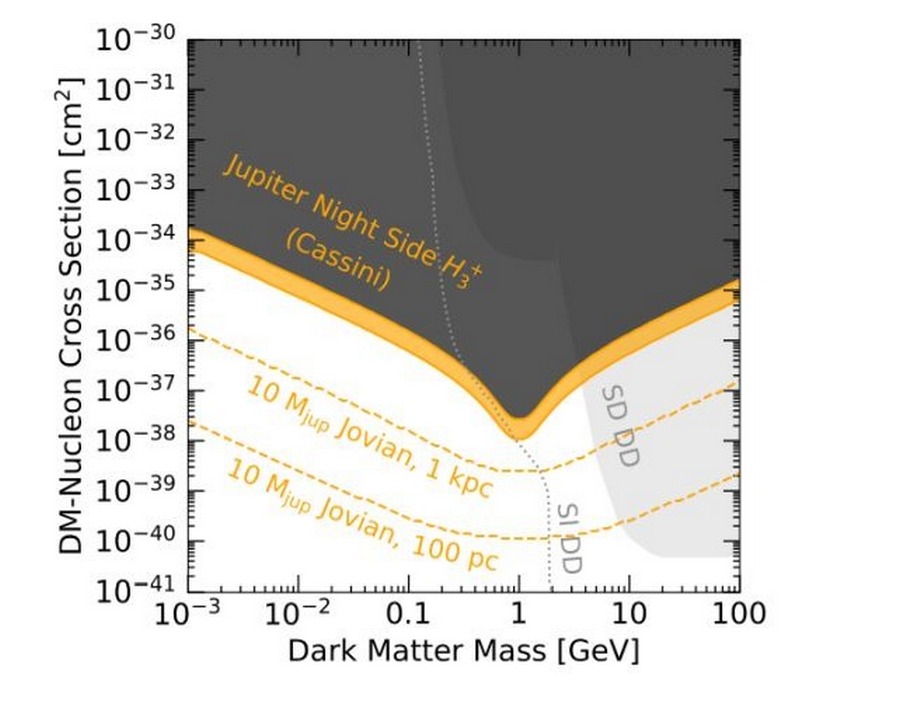The baryonic (ordinary) matter that we can observe – stars, planets, gas, dust – is a minority in the Universe. About 70-80% of the total mass of outer space is dark matter. However, it is invisible and is only noticed because of its gravitational interaction with baryonic matter. When the effects of ordinary matter are taken into account, the residual gravity is attributed to dark matter. Usually its influence is noticed on huge scales, such as galaxy collisions. However, a new study proves that its influence can be seen even in the Solar System, particularly in the atmosphere of Jupiter. The infrared glow on the night side of the planet may be due to interactions with dark matter, which creates an excess of trihydric cations (H3+).

Physicists Carlos Blanco and Rebecca Leane believe that dark matter can be captured by planets and then annihilate, producing ionizing radiation. This radiation interacts with atoms in the ionosphere to create H3+.
One method of detecting dark matter is annihilation, which is the annihilation of dark matter particles from each other to form bursts of heat or light. The researchers hypothesize that these processes may occur in the upper atmosphere of planets like Jupiter, in a layer known as the ionosphere.

Jupiter is the largest body in the Solar System after the Sun and has a relatively cold core, making it an ideal candidate for studying dark matter. The Cassini space probe, flying past Jupiter more than 20 years ago, had a VIMS instrument on board that could detect infrared glow from hypothetical dark matter annihilation. The researchers analyzed measurements from Jupiter’s equatorial zone at night to minimize the effects of auroras and solar radiation. Although no excess of H3+ was detected, the results helped to establish constraints on the behavior of this type of dark matter, which is important for further studies on other planets.

These studies have shown for the first time that dark matter can generate ionizing radiation in planetary atmospheres, which can be detected through excess of H3+. In the future, this discovery could contribute to the study of dark matter on exoplanets through high-precision measurements of planetary spectra.
The study is published in Physical Review Letters.
We previously reported on how dark matter could make the stars at the center of the Milky Way immortal.
According to sciencealert.com


